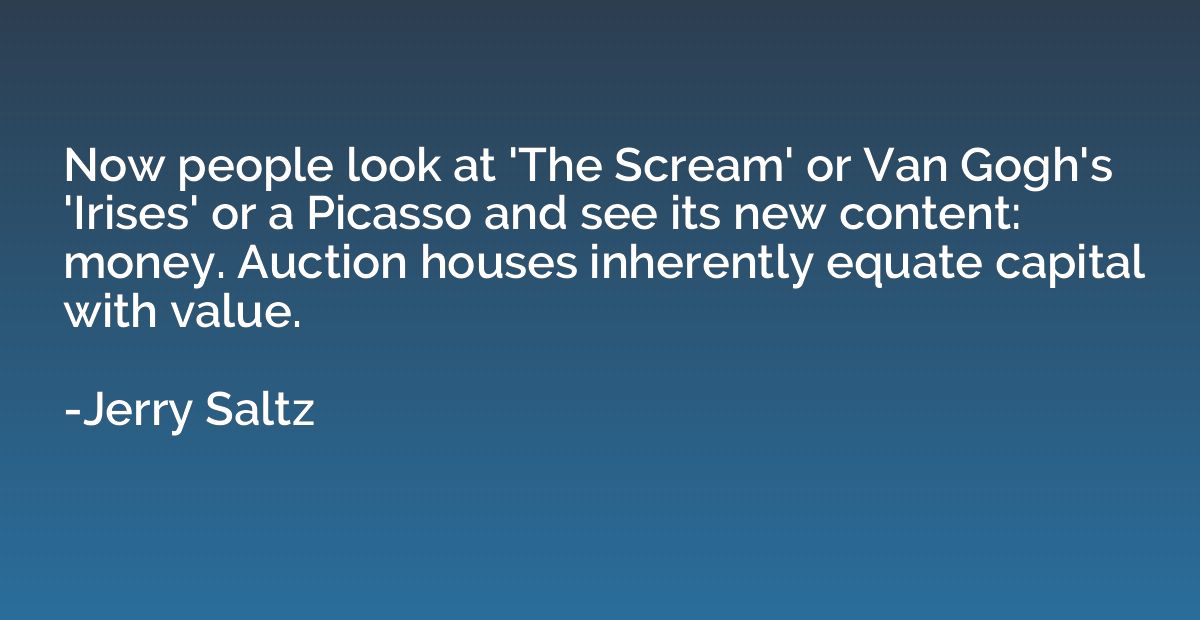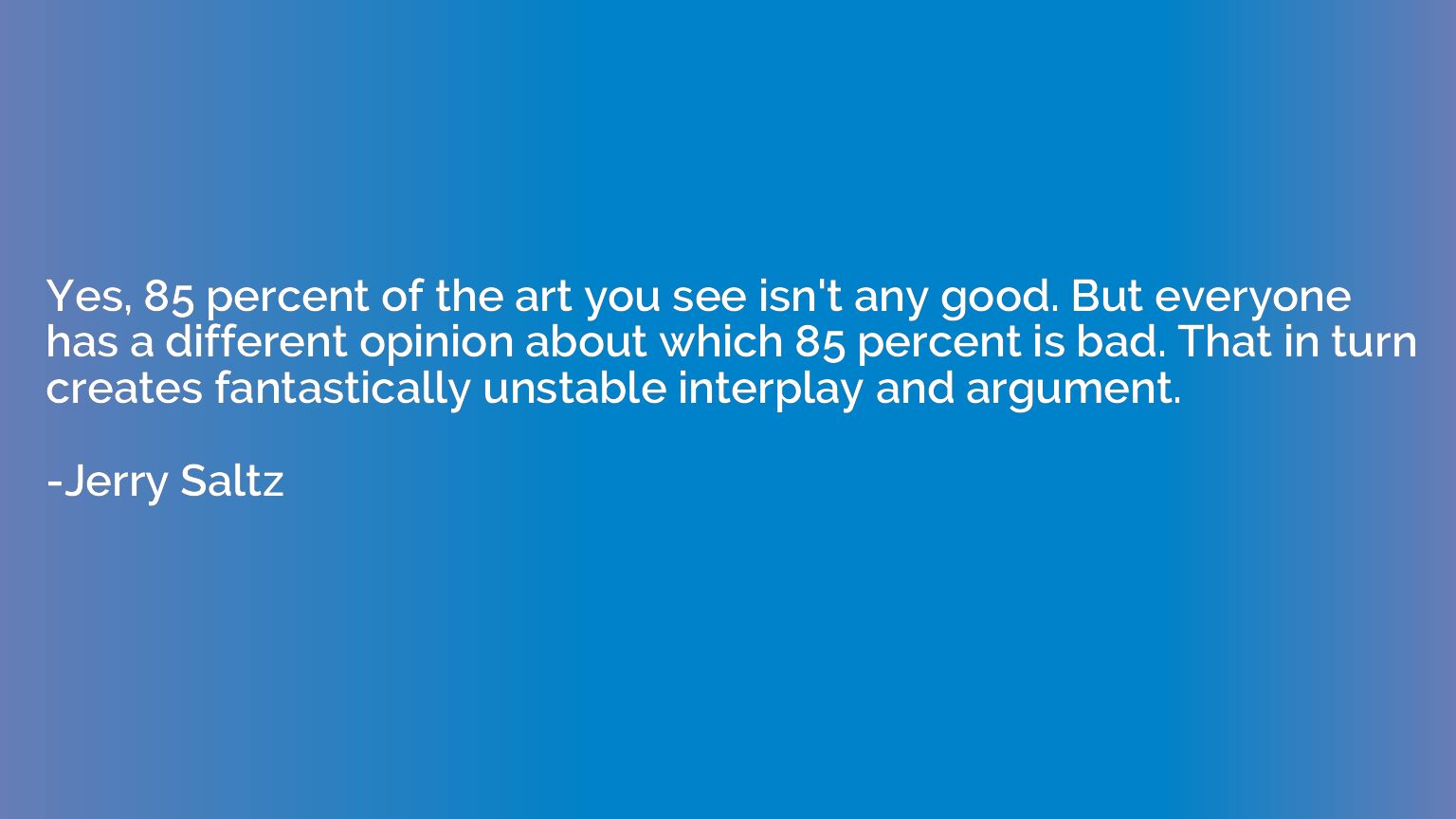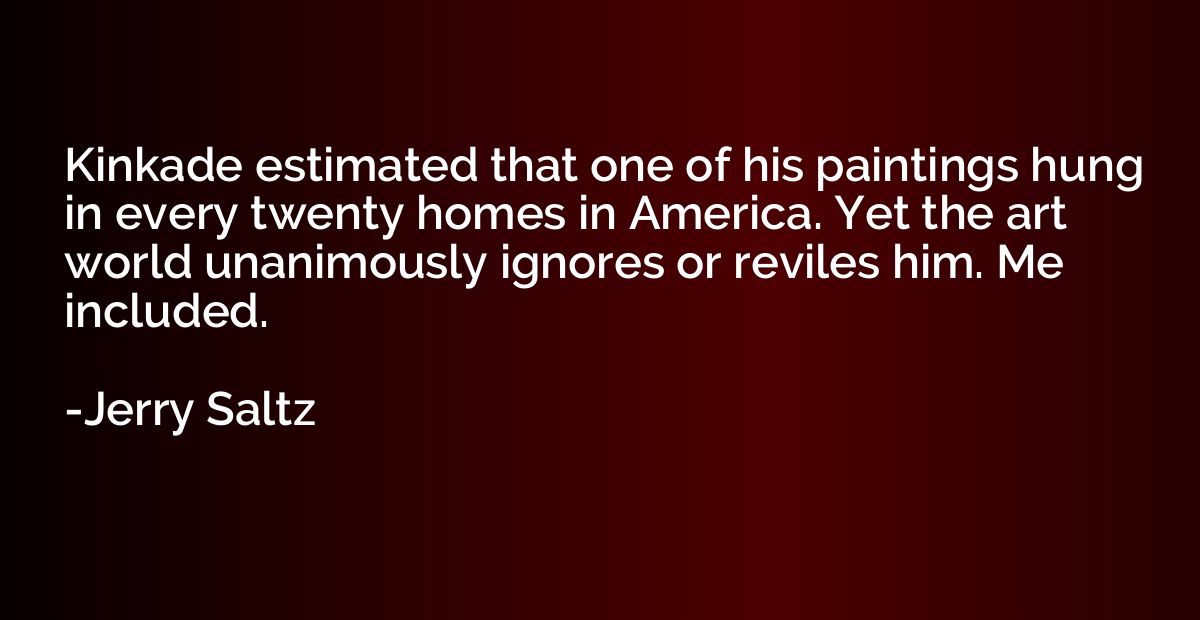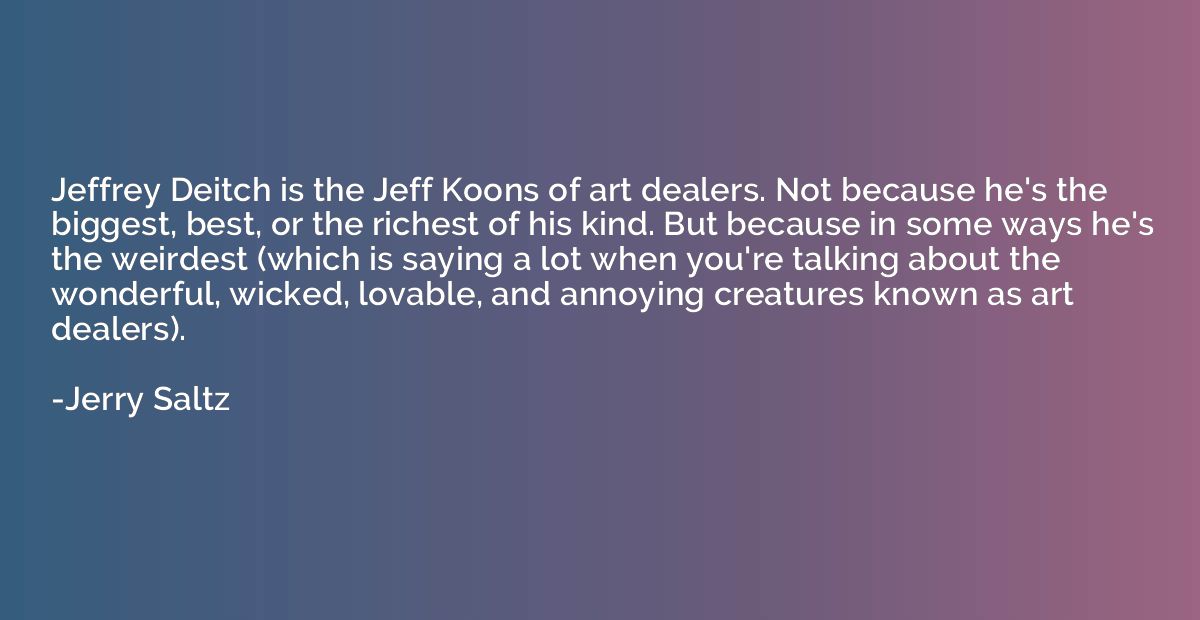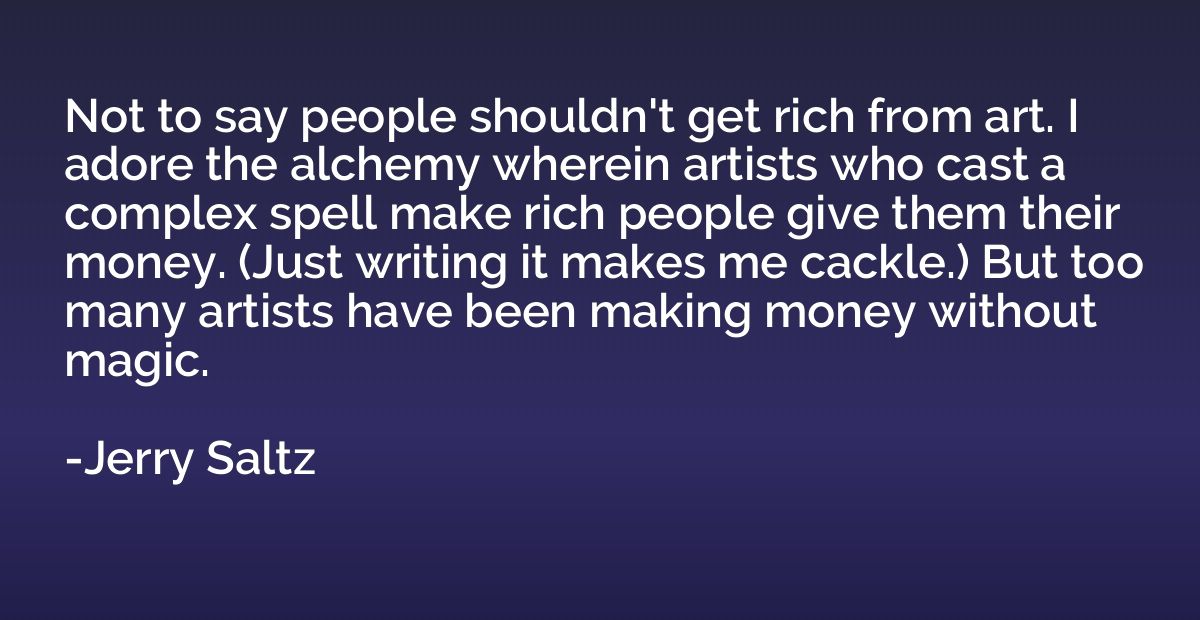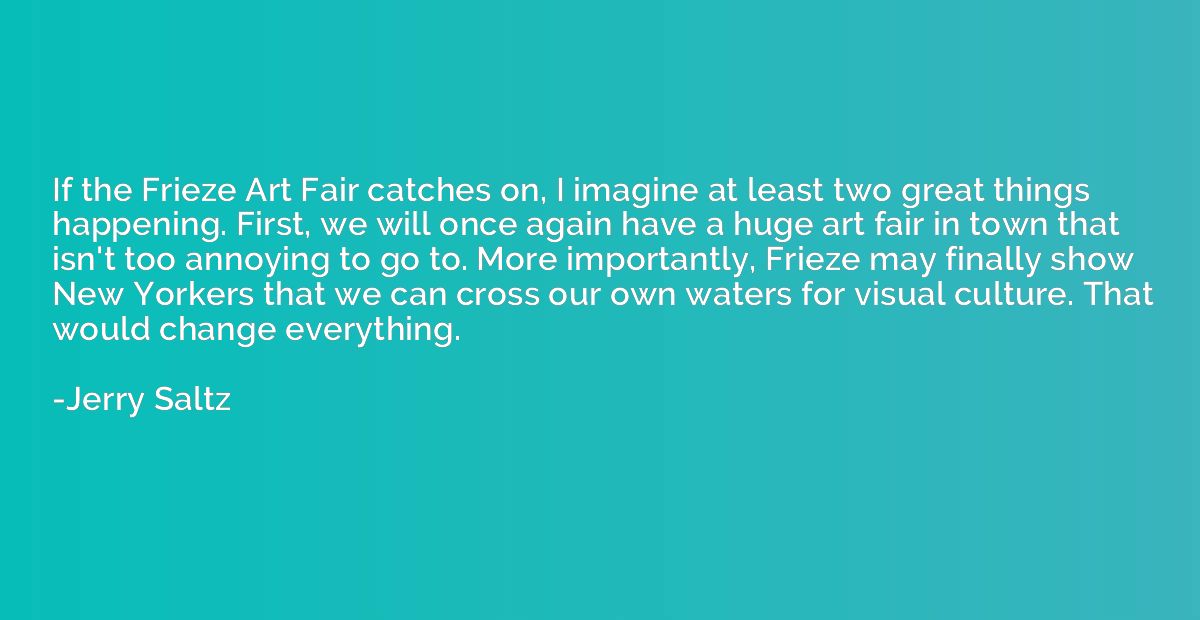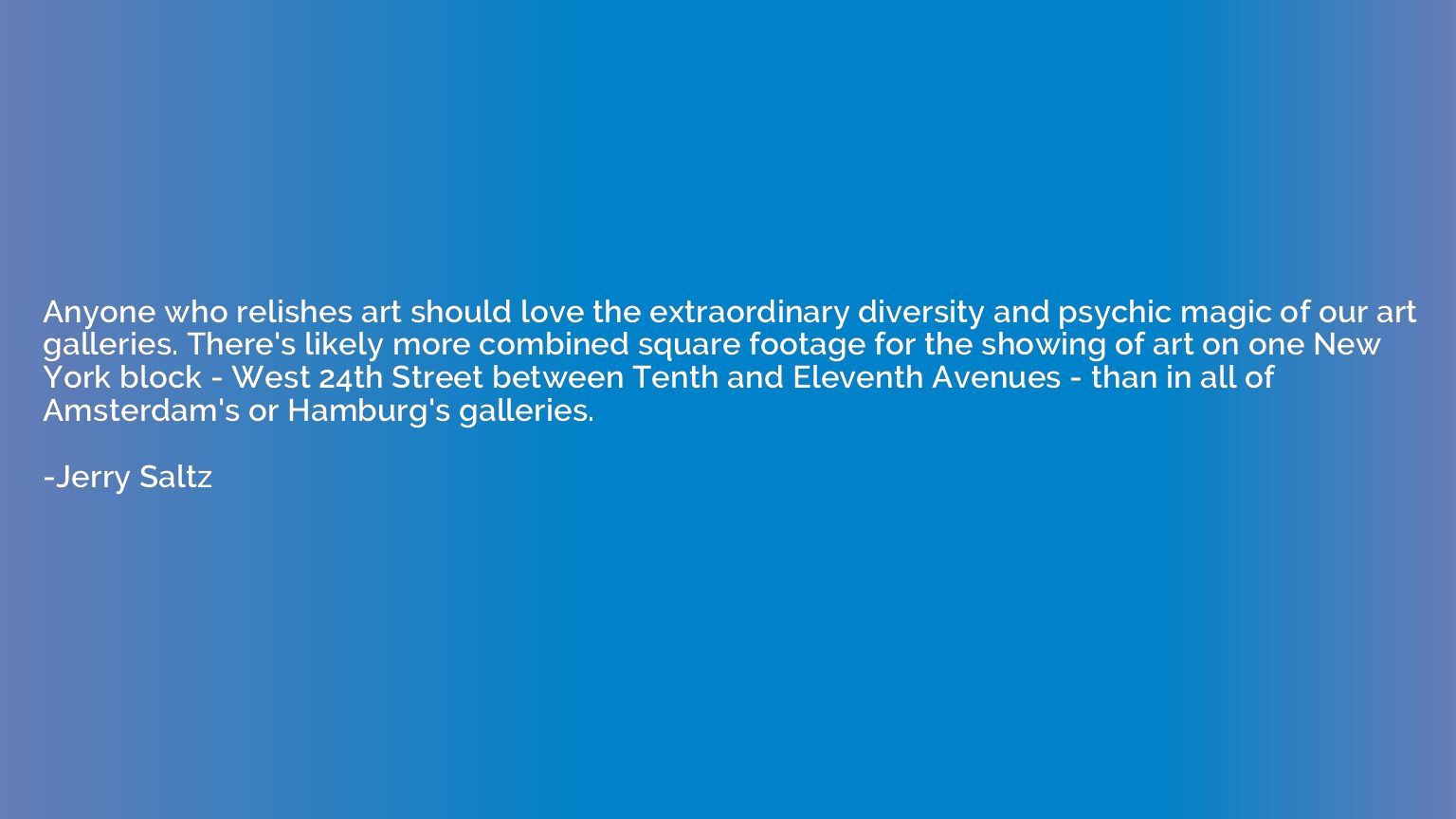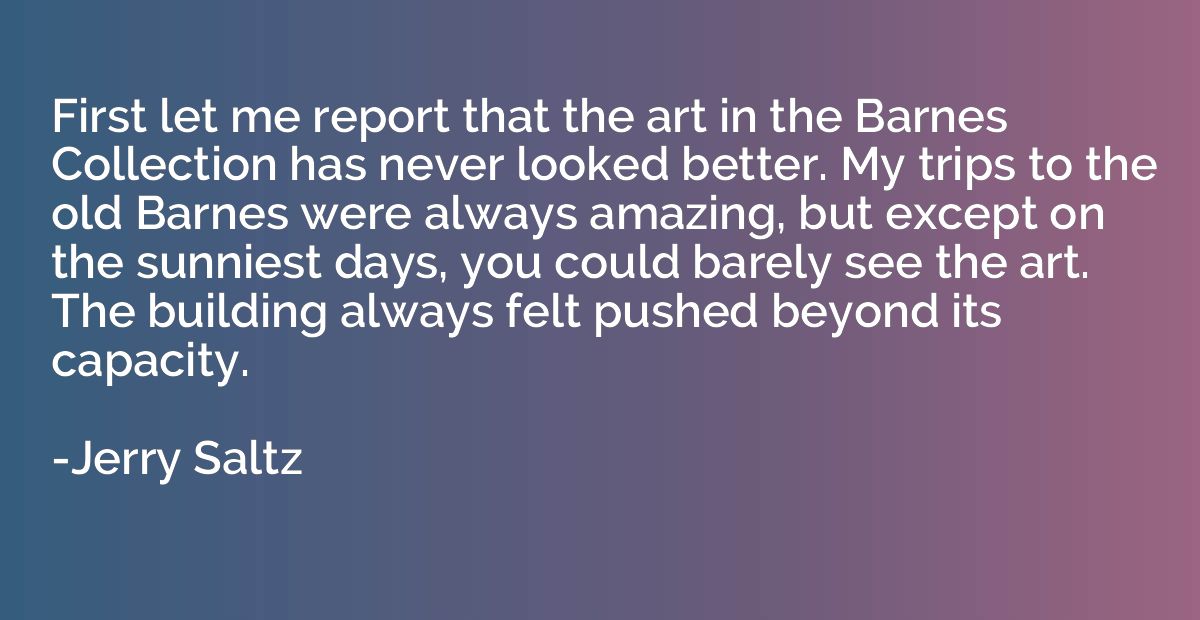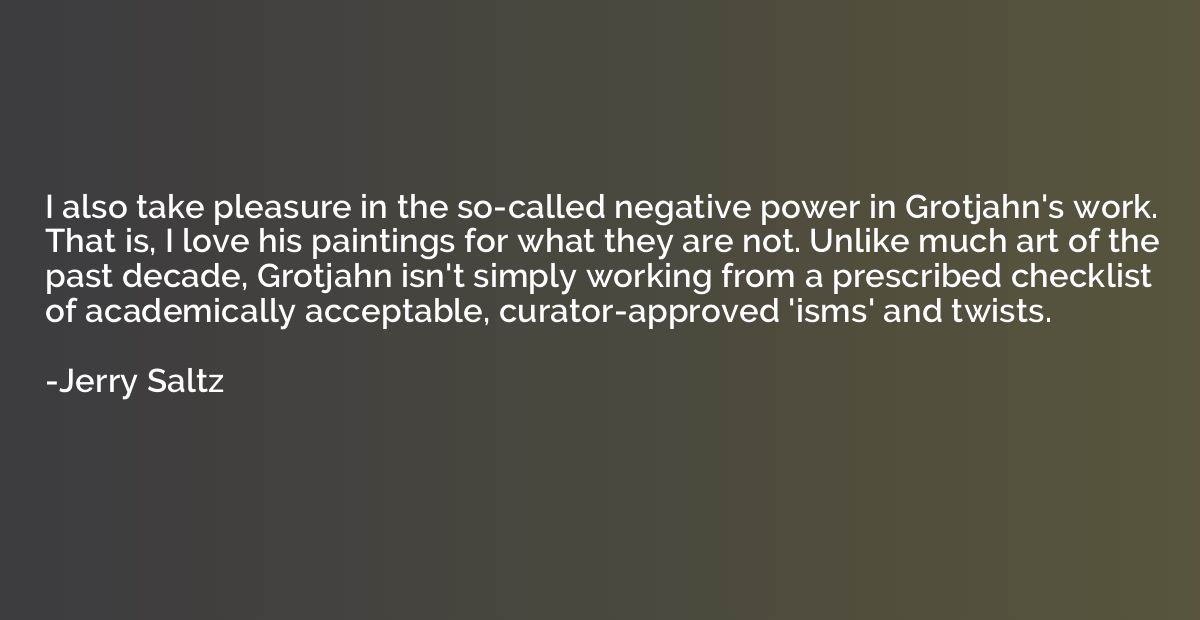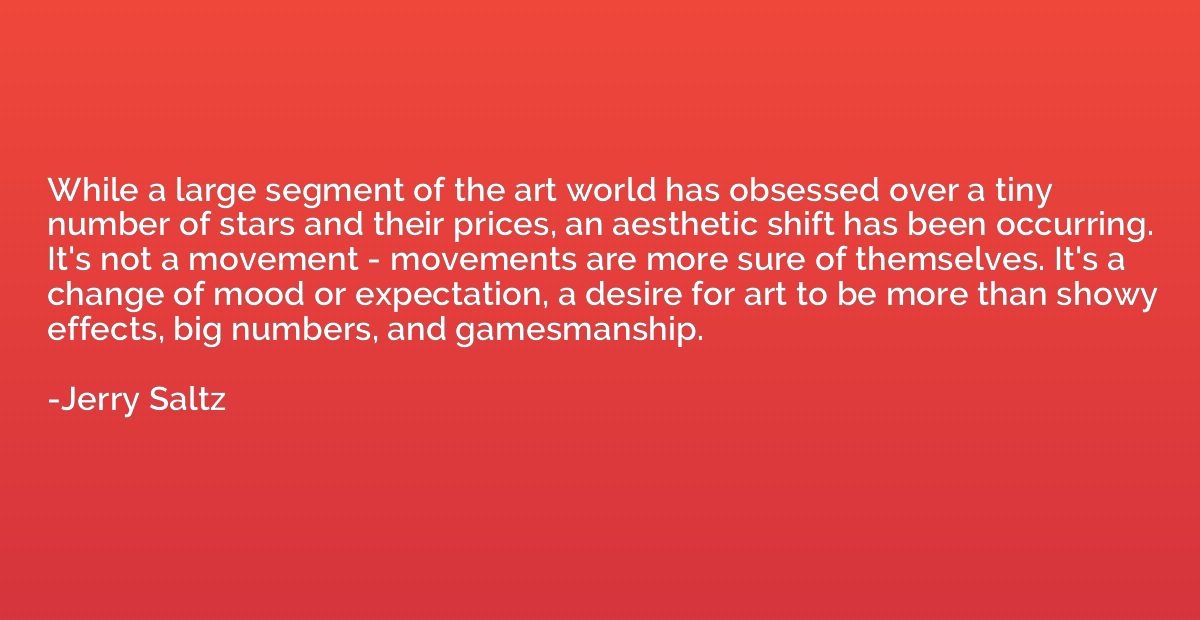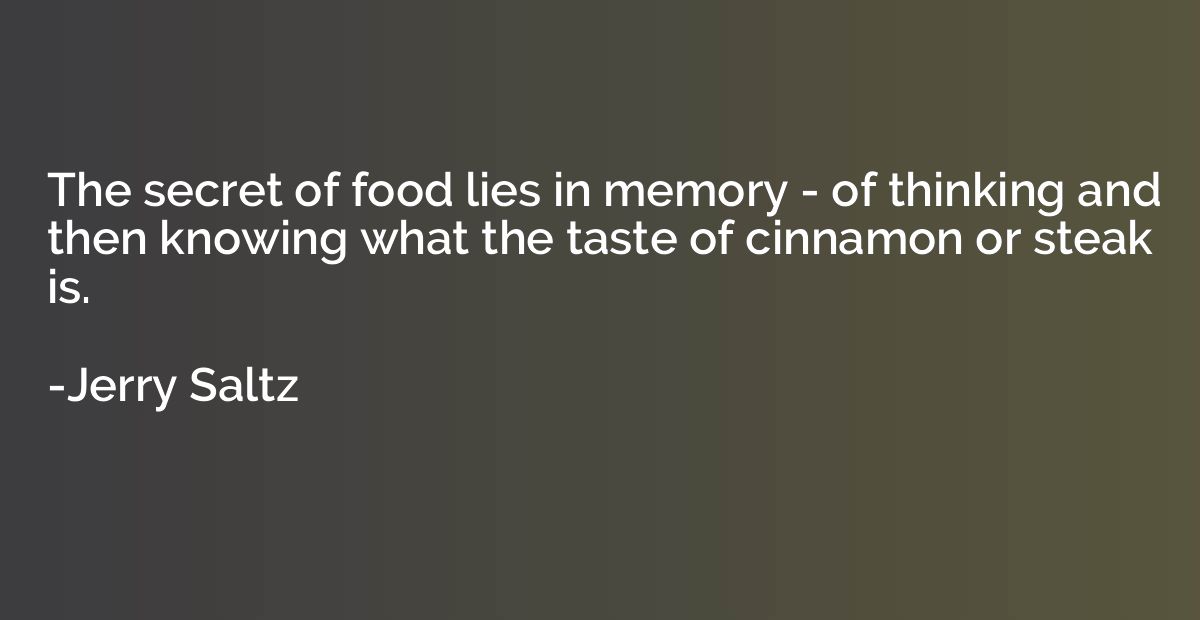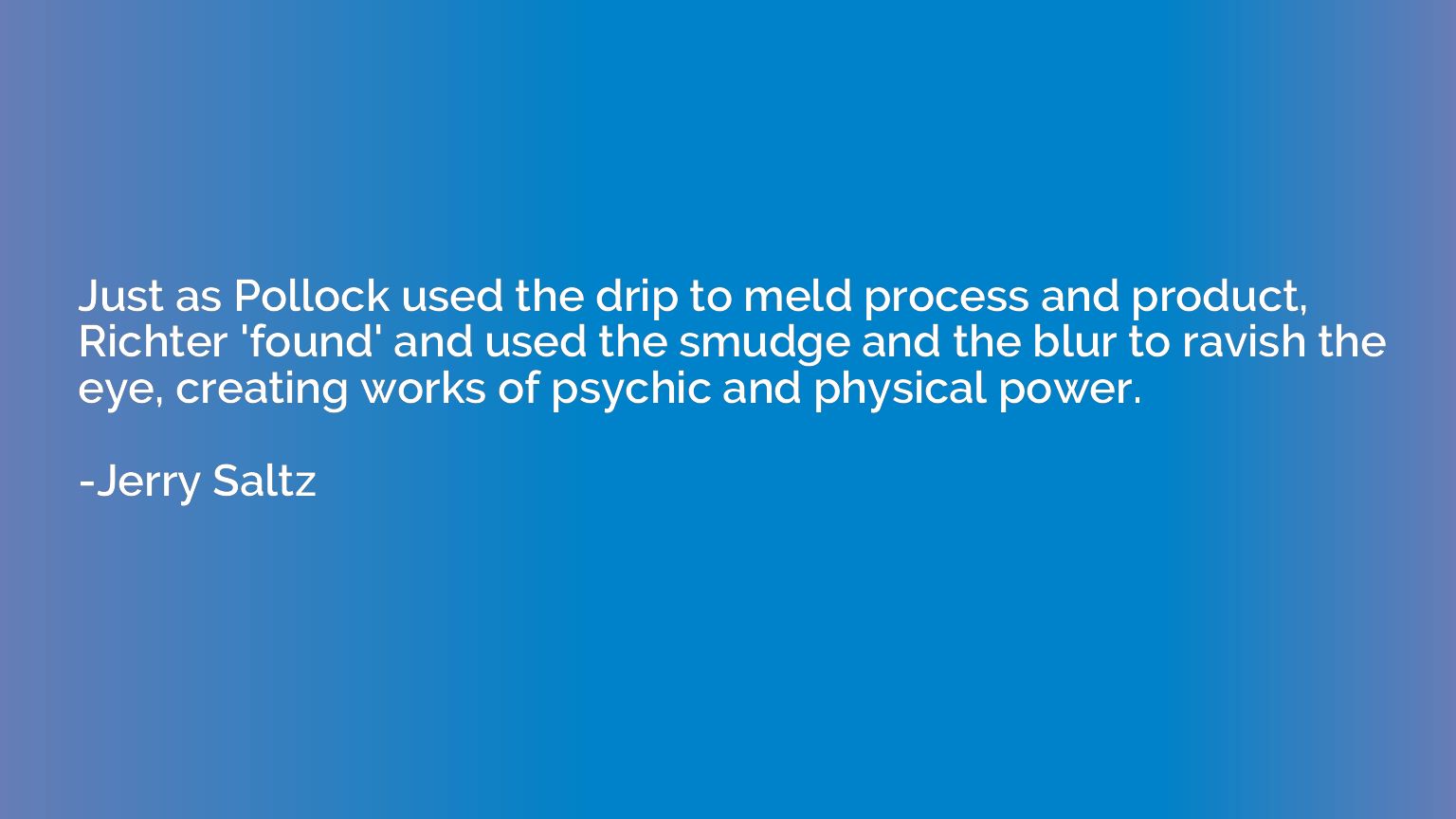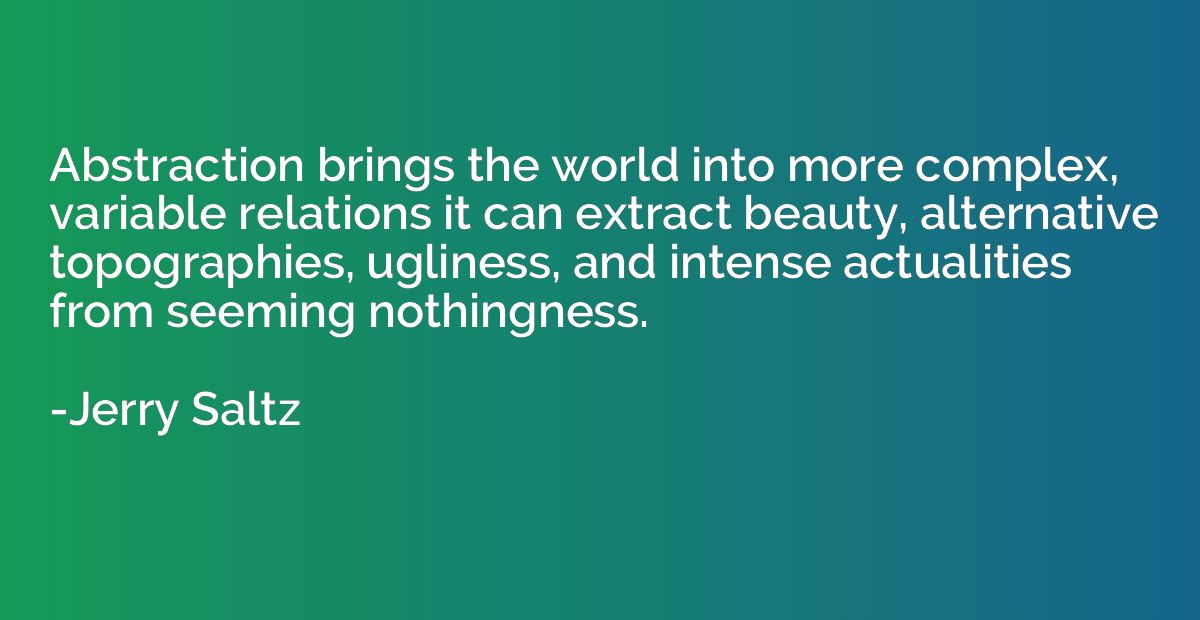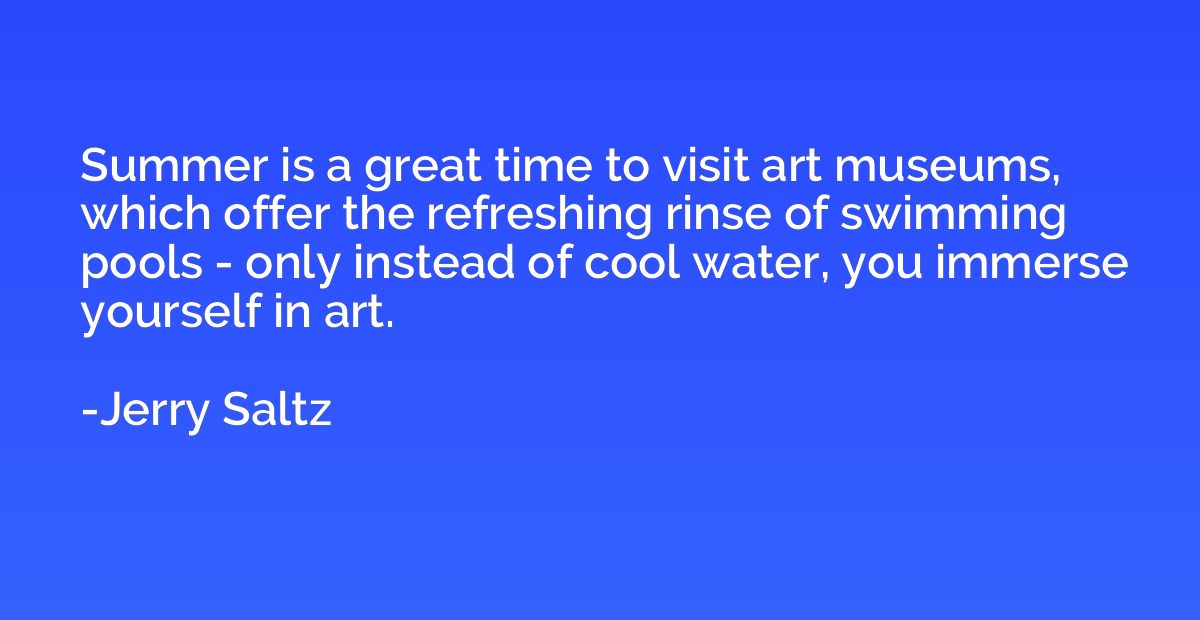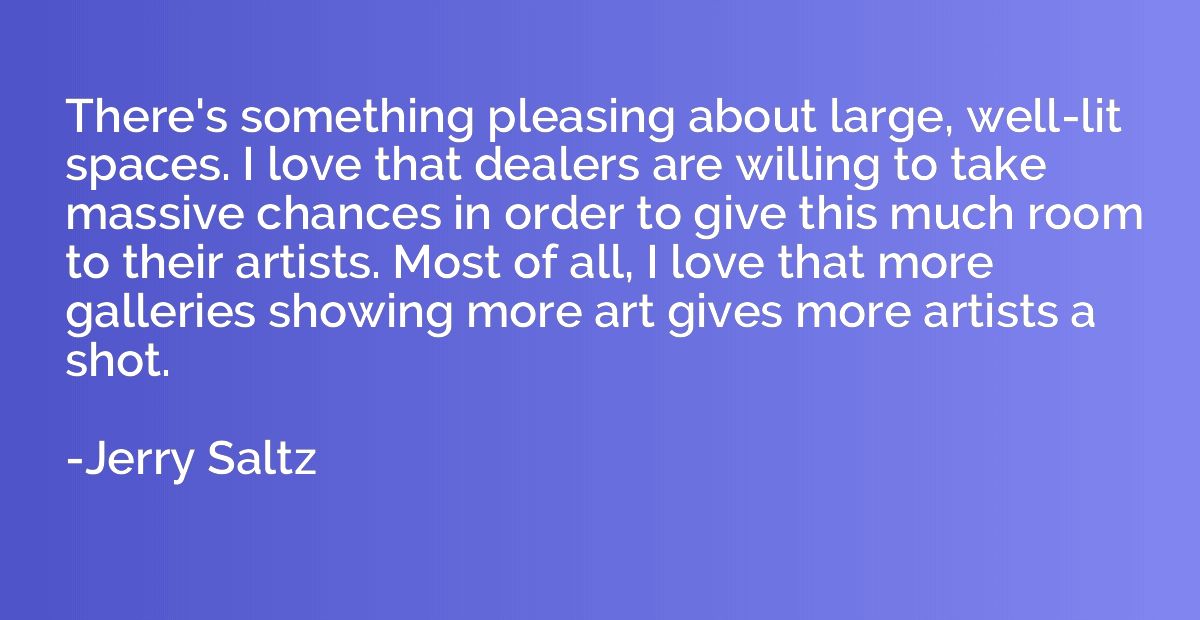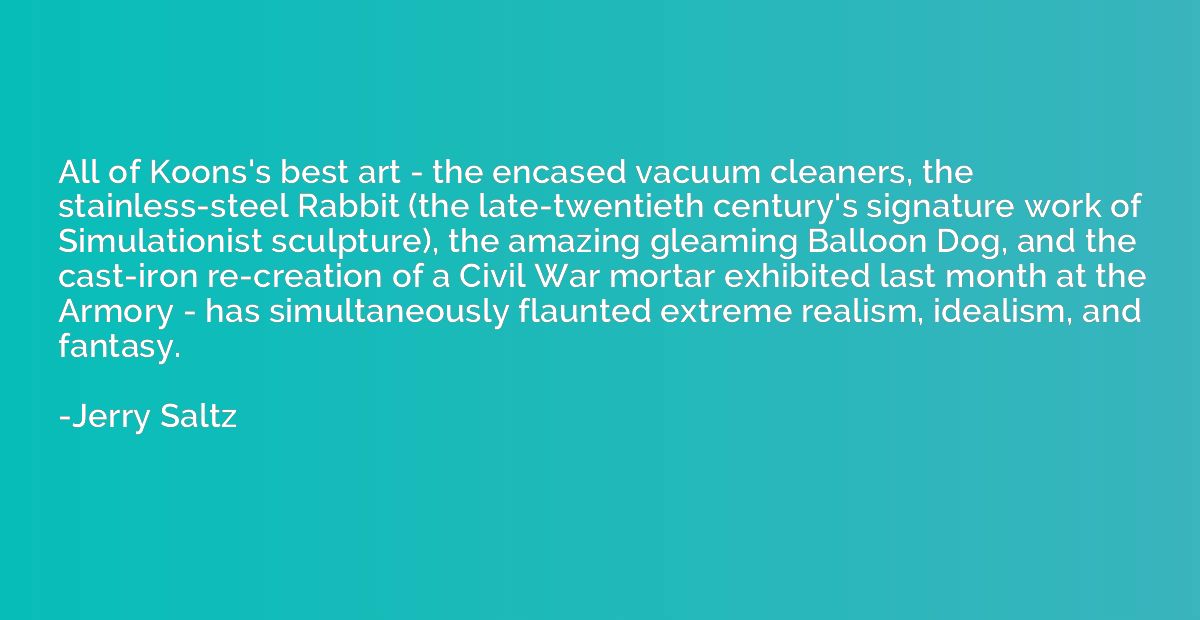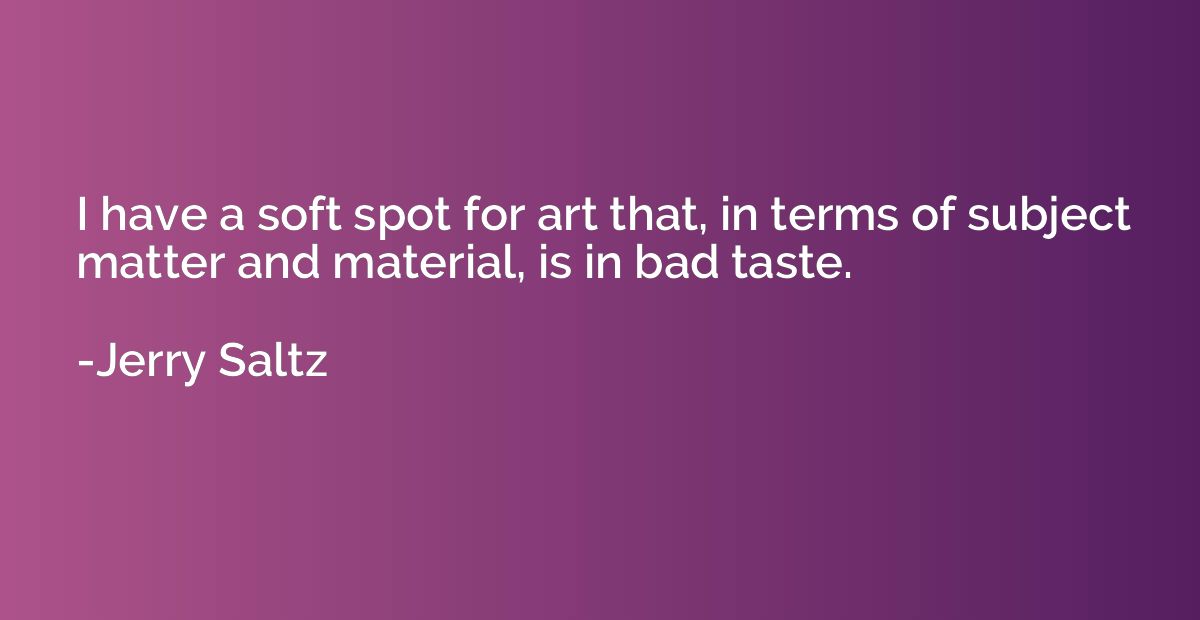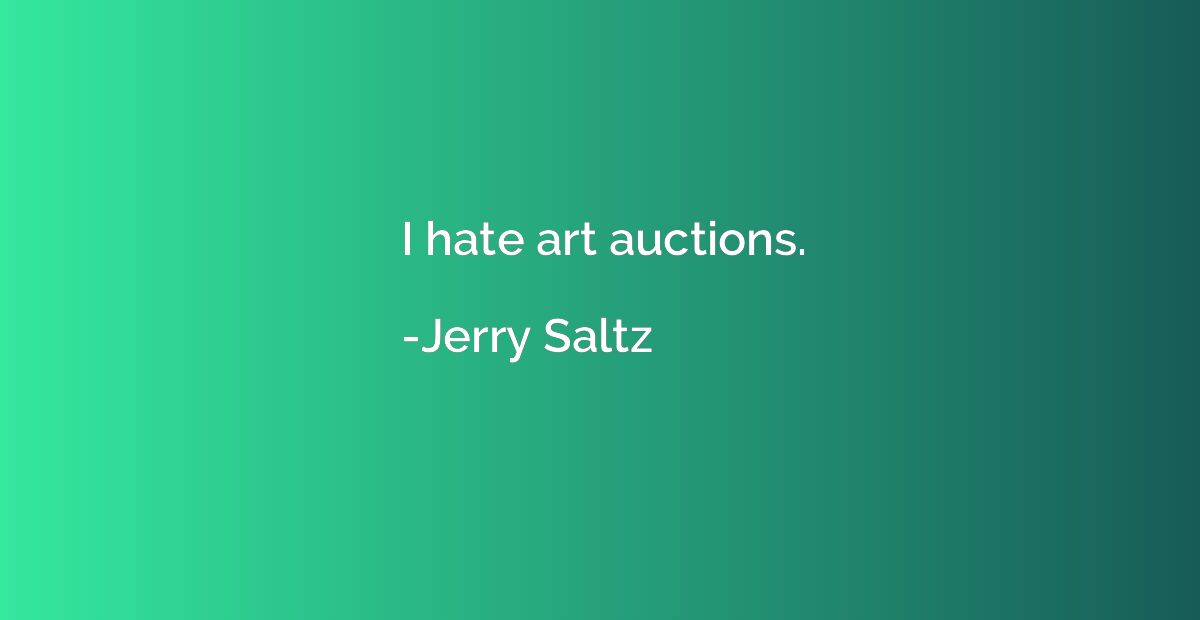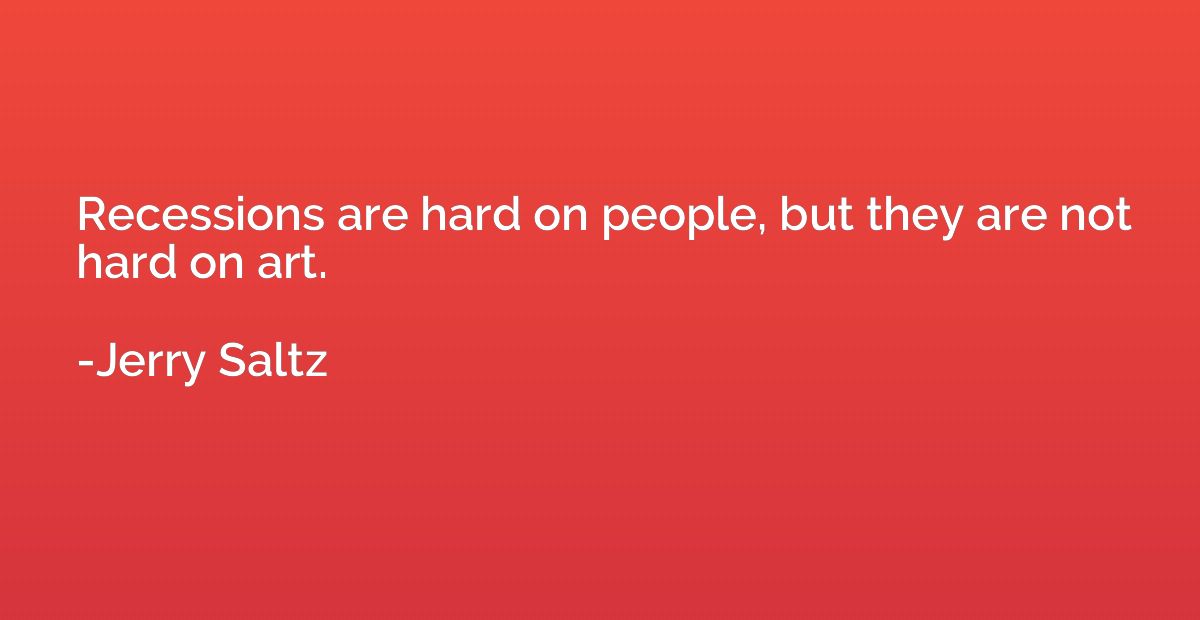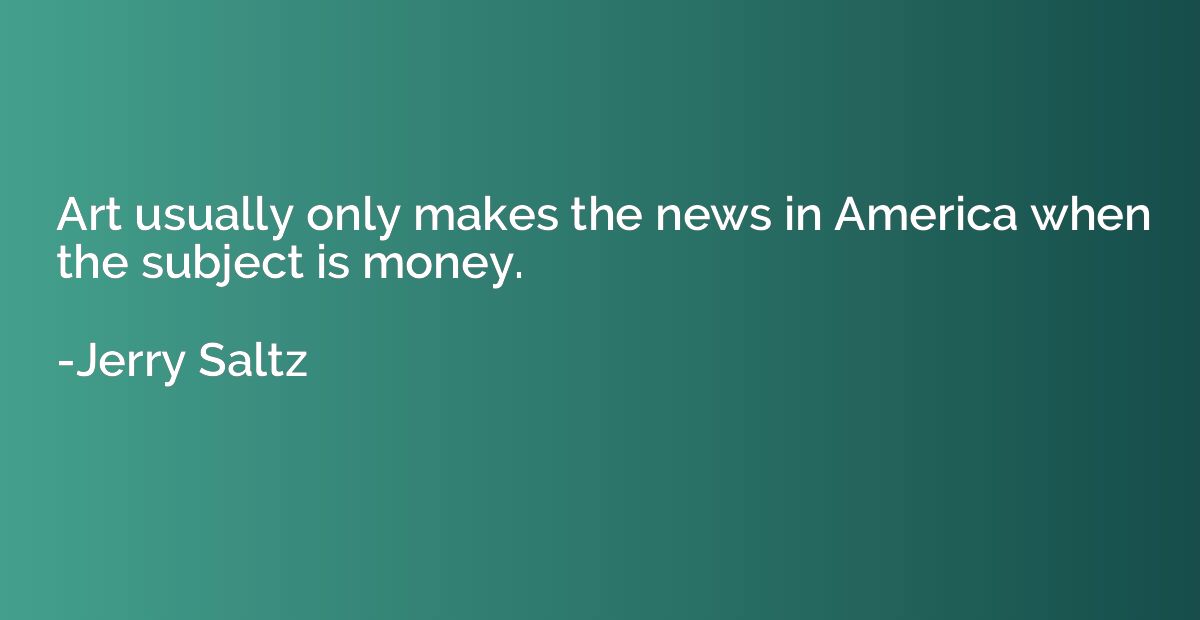Jerry Saltz Quotes
A collection of quotes by Jerry Saltz.
Jerry Saltz is an American art critic and journalist widely recognized for his extensive contributions to the art world. Born on February 19, 1951, in Oak Park, Illinois, Saltz developed a profound interest in art from an early age. He earned a Bachelor of Fine Arts degree in Painting from the School of the Art Institute of Chicago.
Saltz's career soared after he moved to New York City in the late 1970s. He began writing art critiques for various publications, including the Village Voice, where he gained recognition for his insightful analysis and distinctive writing style. Over the years, Saltz honed his expertise as a critic, delving deep into the world of contemporary art and becoming one of its most prominent voices.
In 2008, Saltz was awarded the Pulitzer Prize for Criticism, a prestigious accolade that attests to his impact on the art community. Alongside his writing, Saltz is also known for his engaging social media presence, where he shares his thoughts on art and interacts with his vast audience.
Jerry Saltz has continuously championed art accessible to all, encouraging dialogue, and challenging the conventional notions of the art world. He remains an influential figure in contemporary art, inspiring both artists and enthusiasts with his thought-provoking perspectives.
